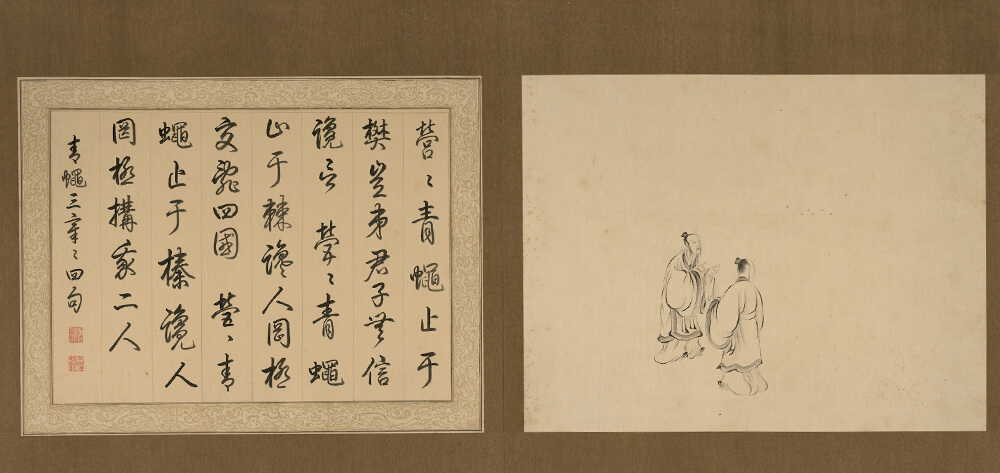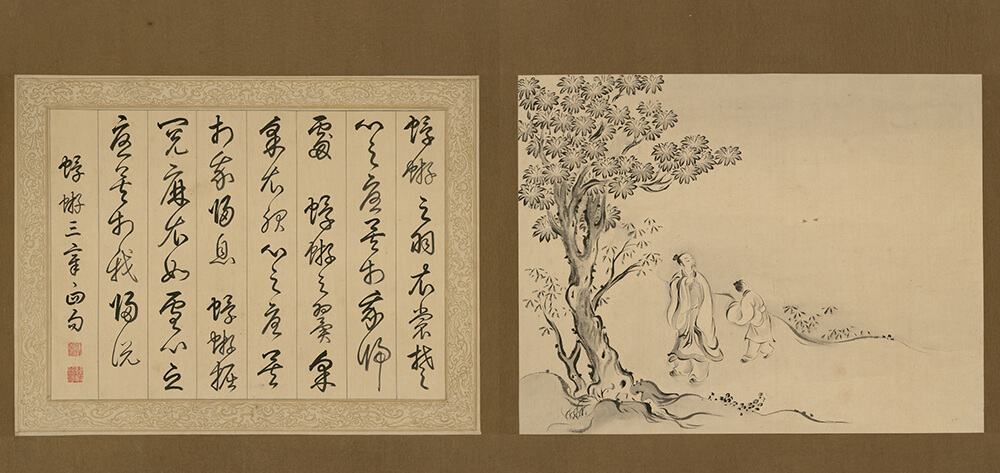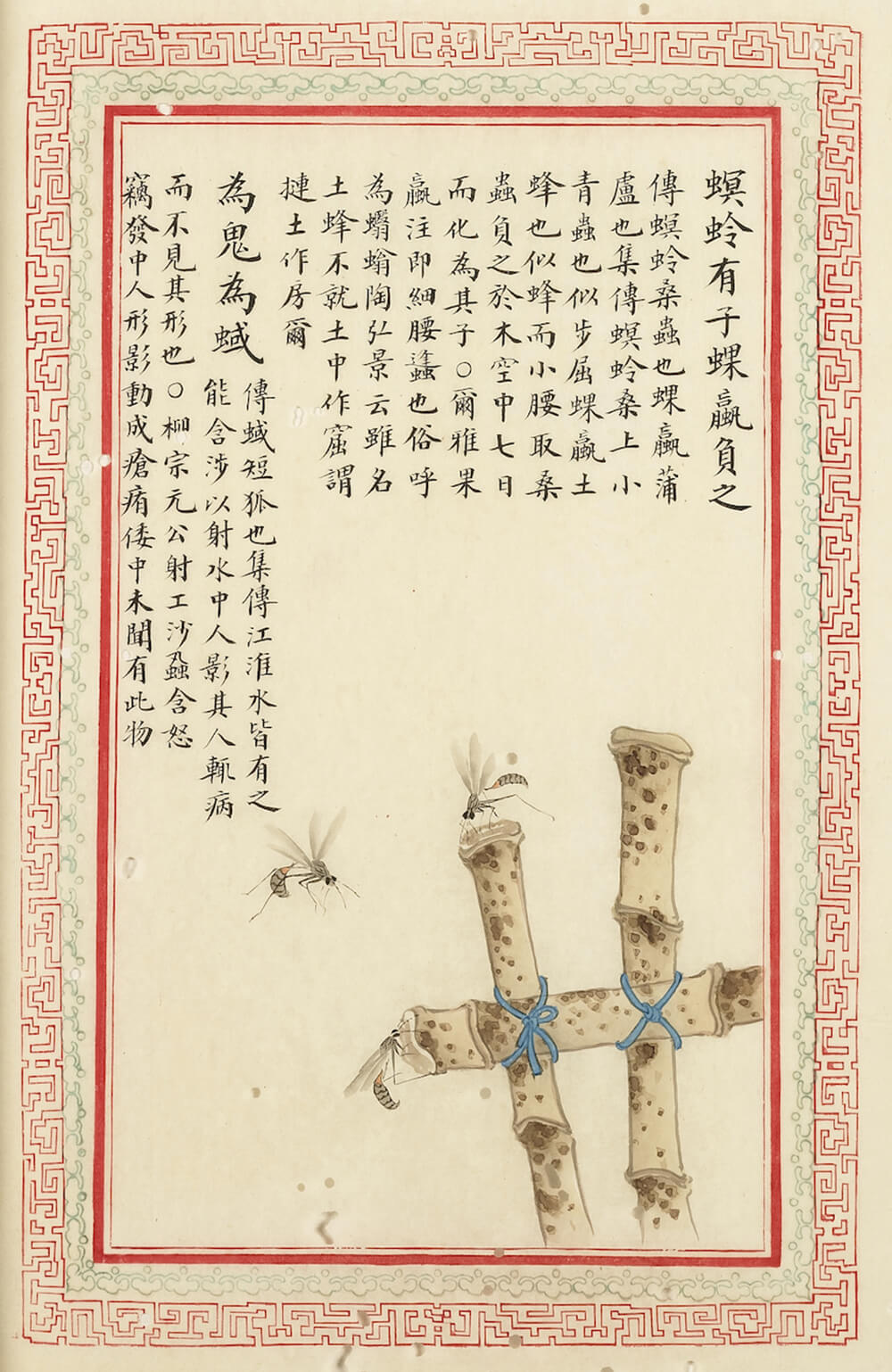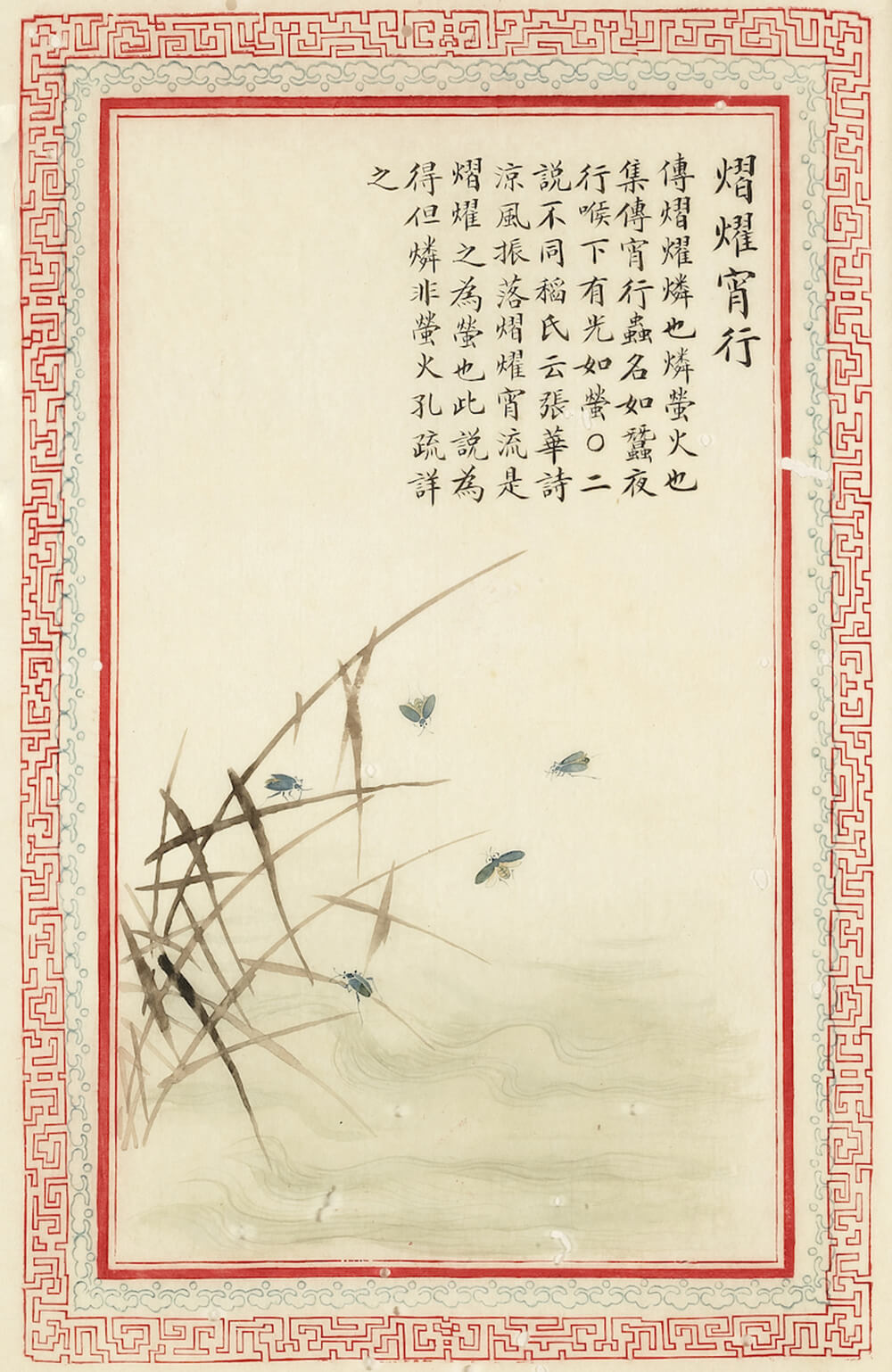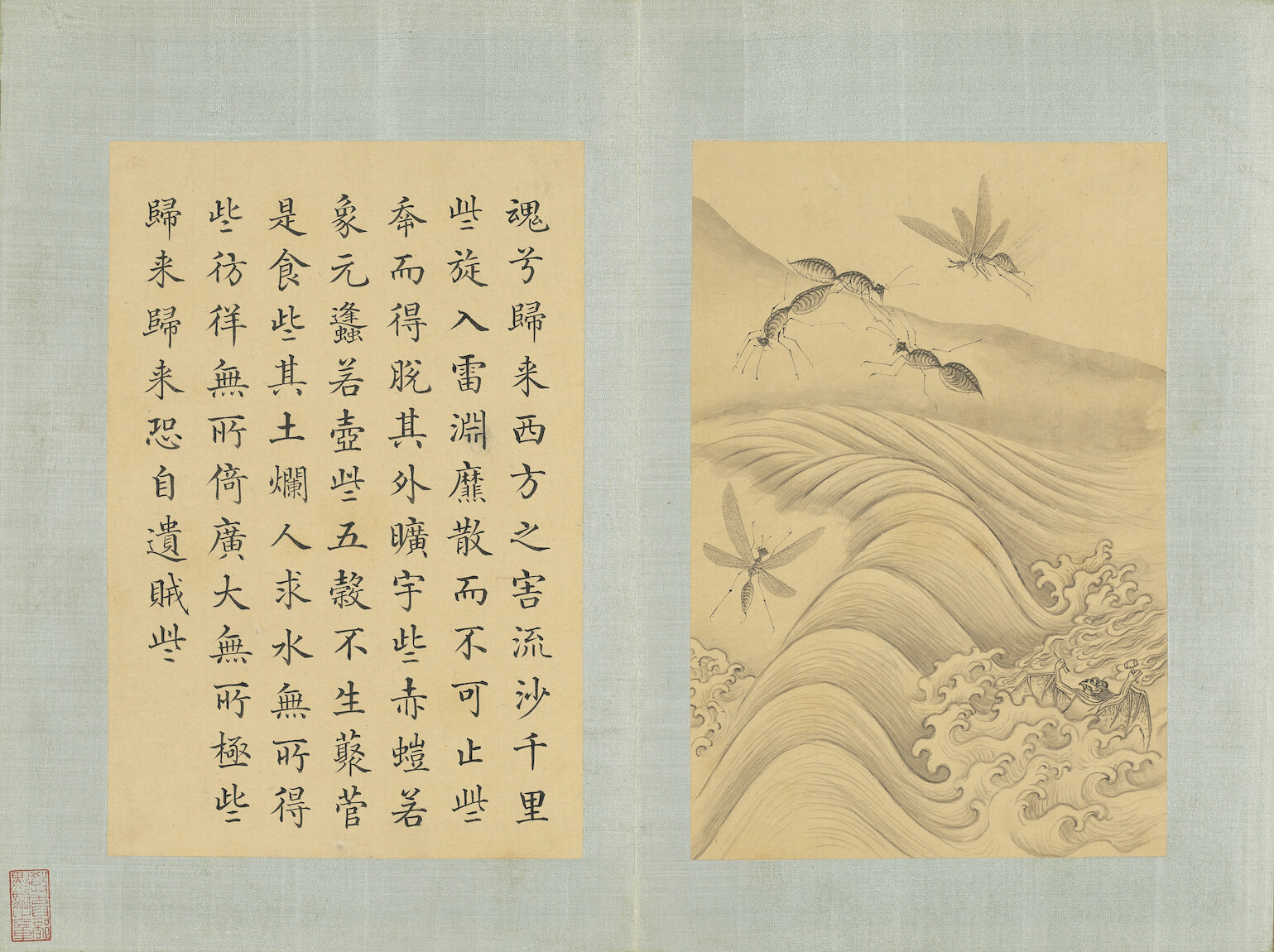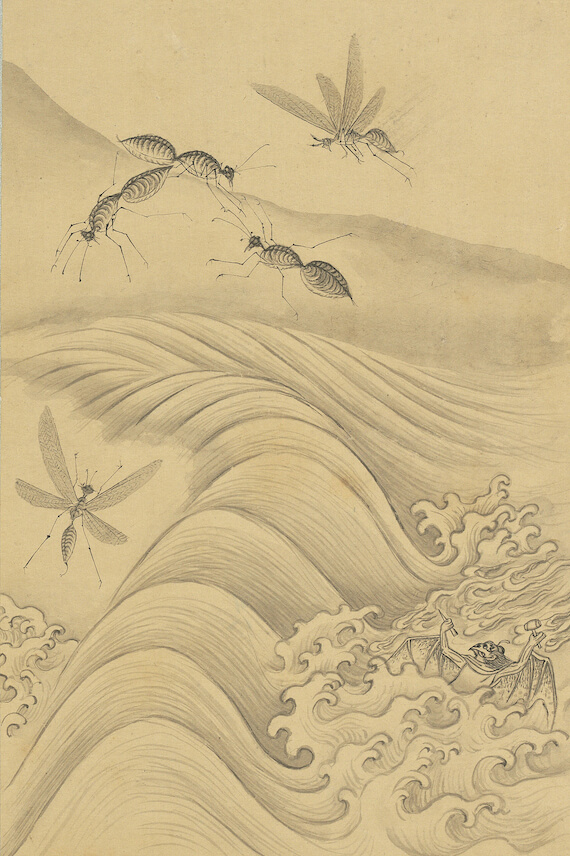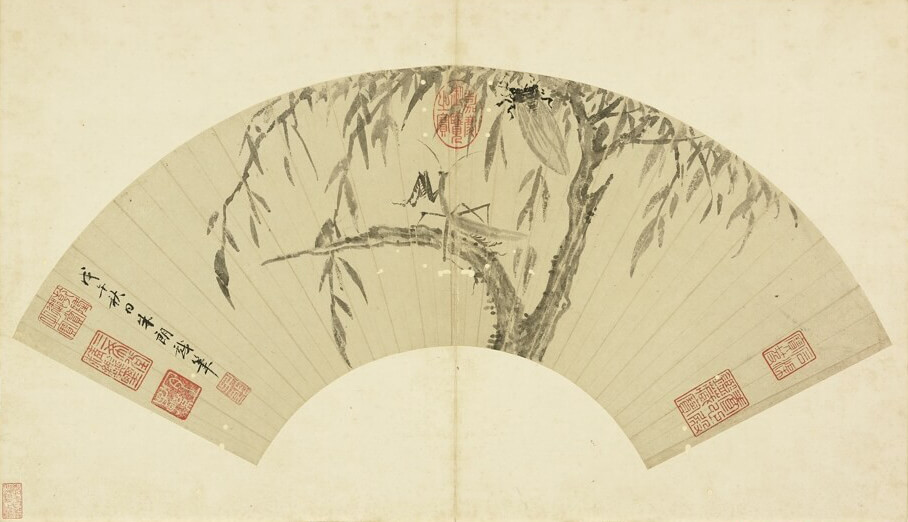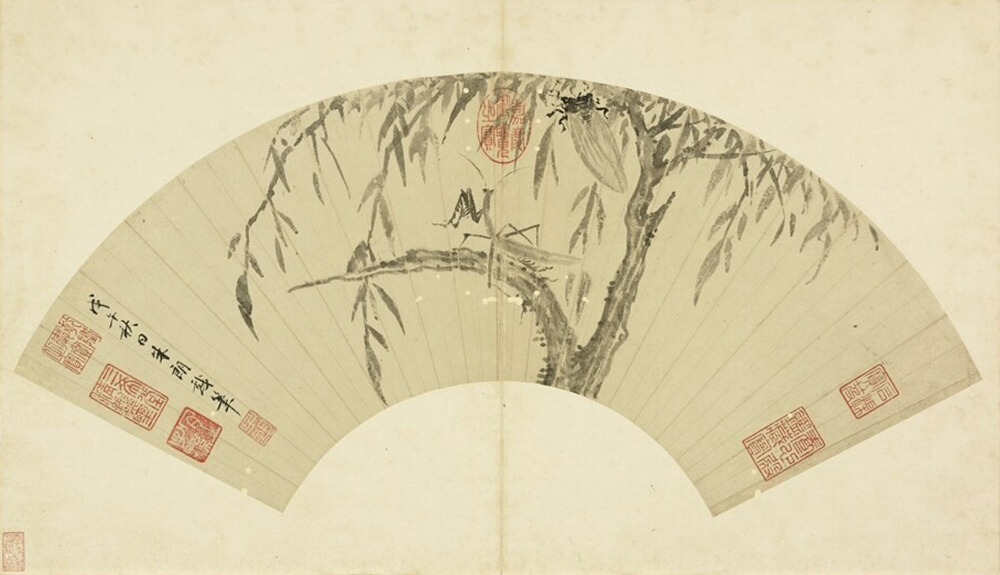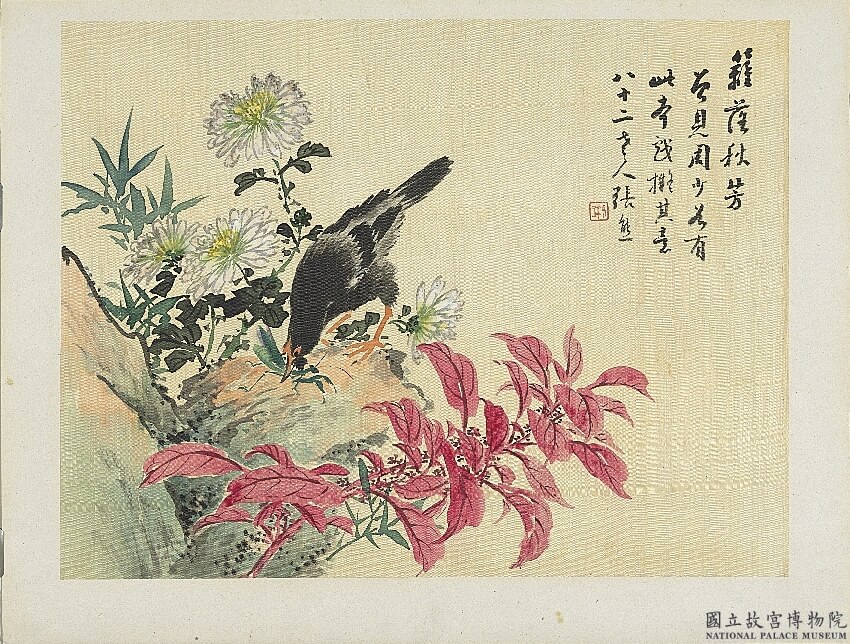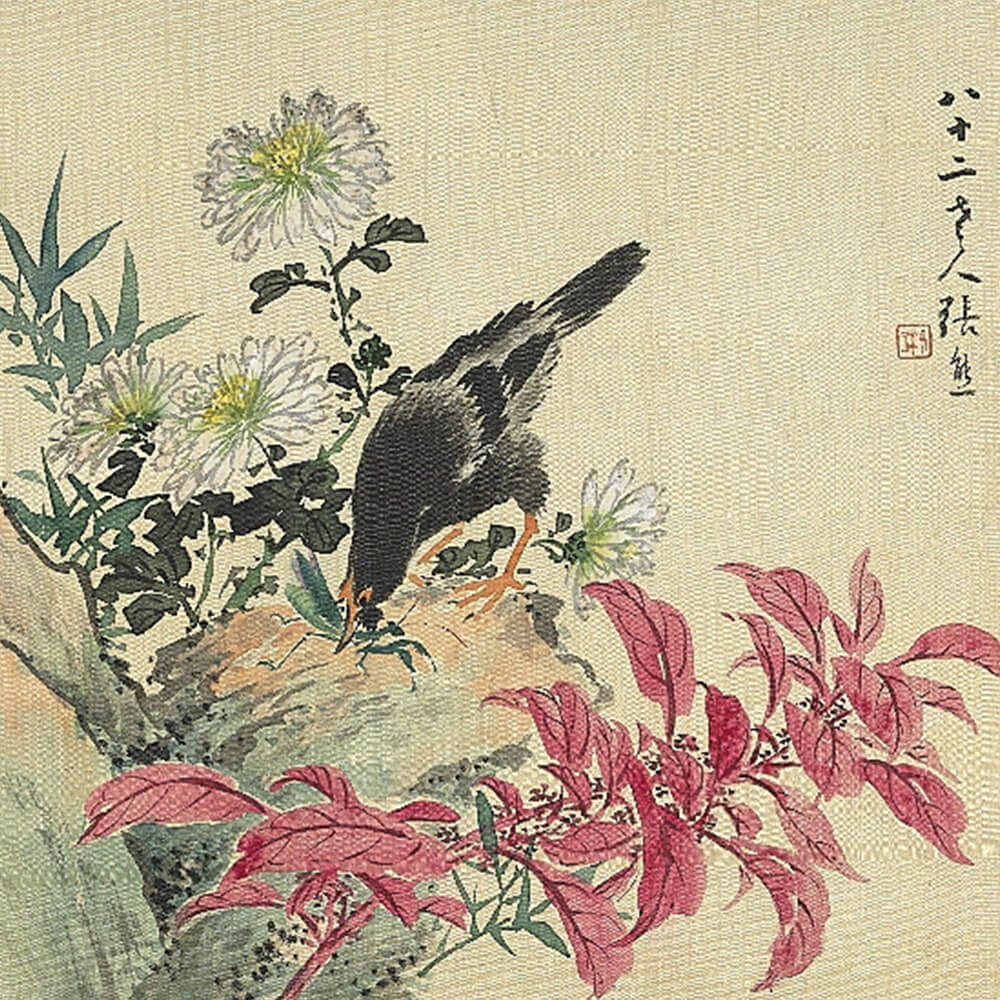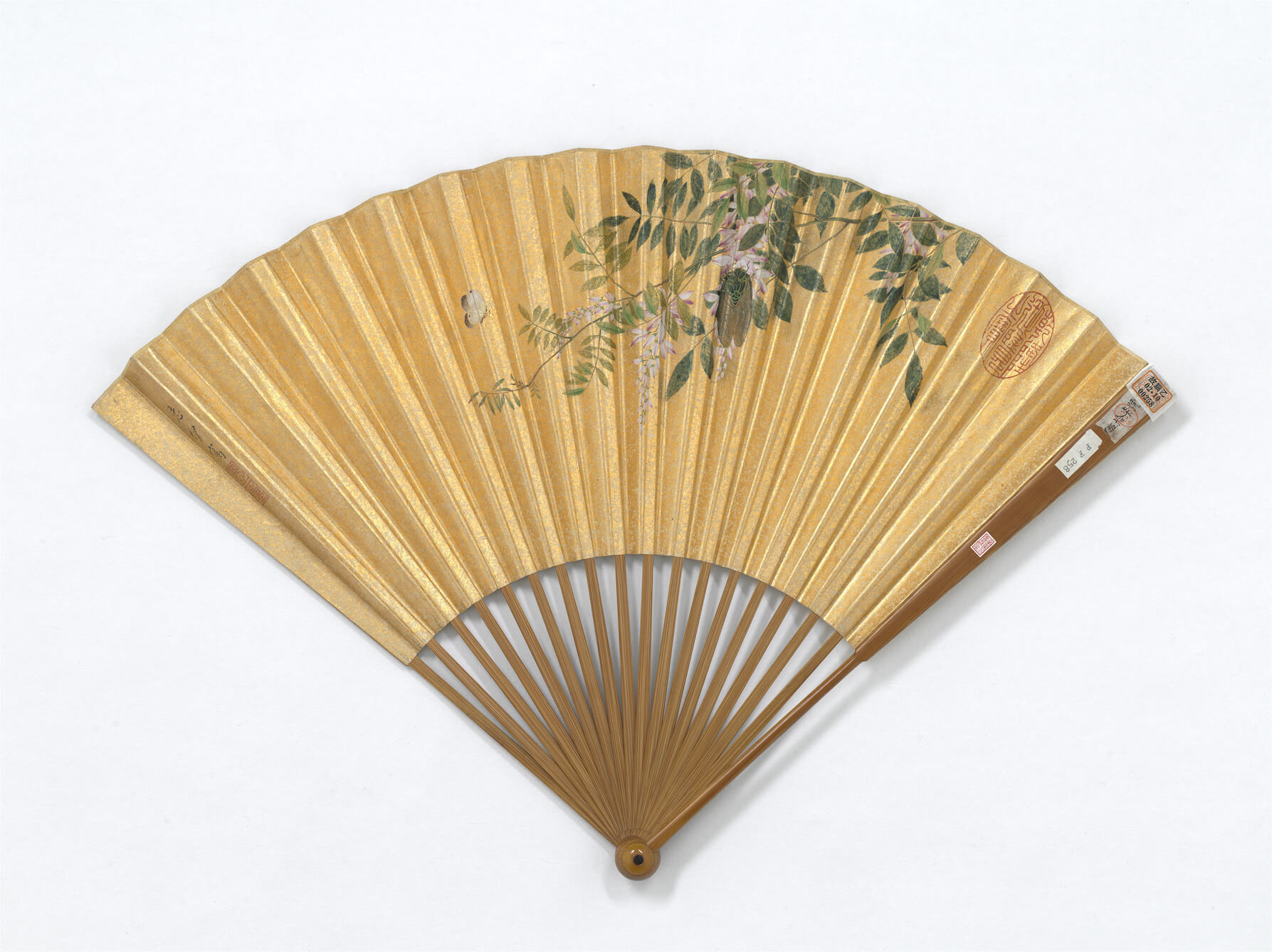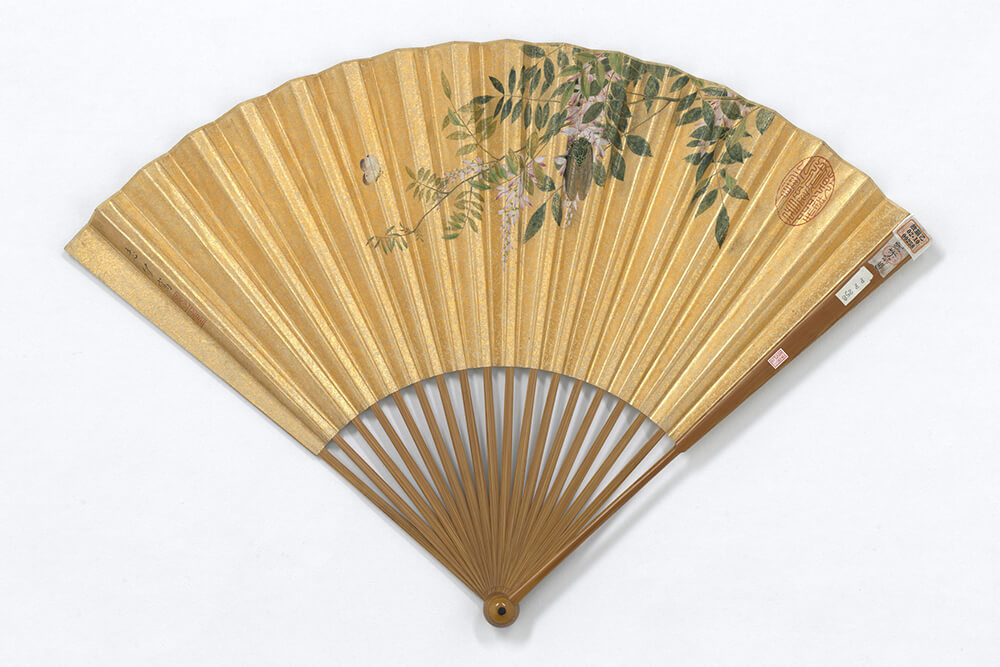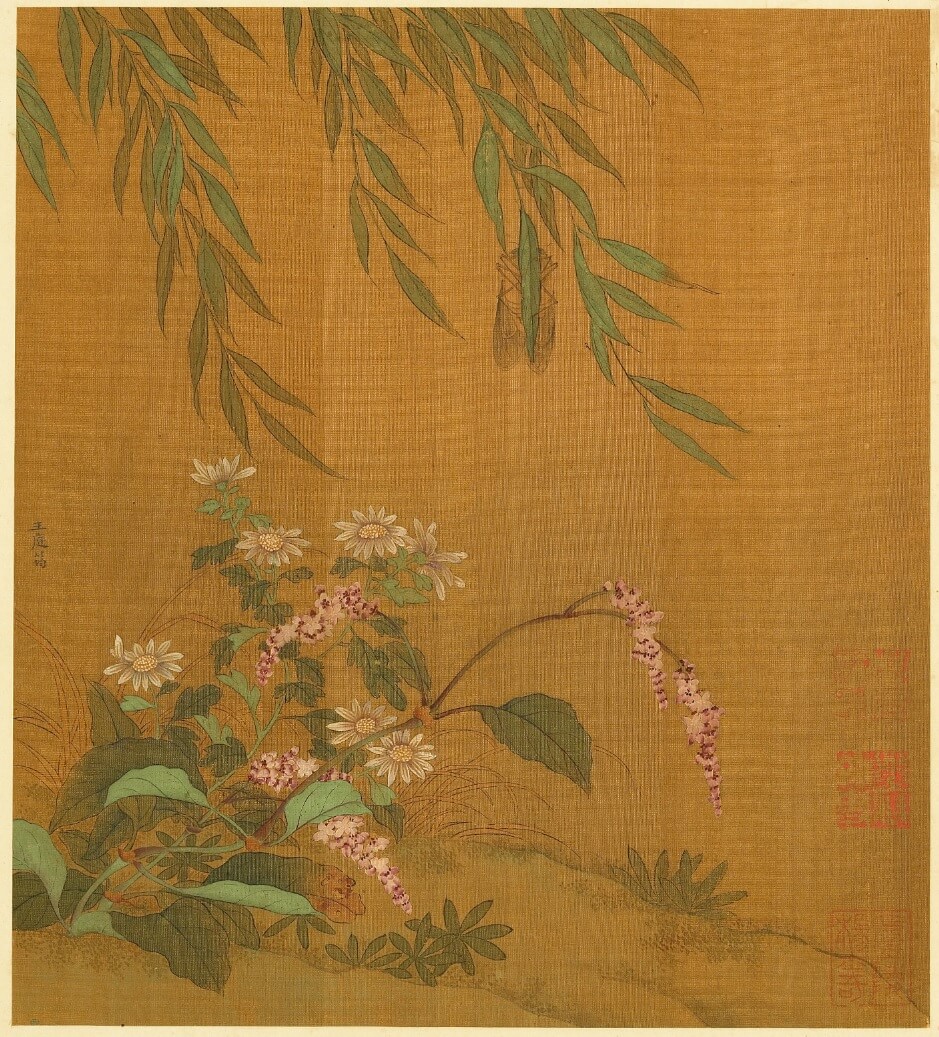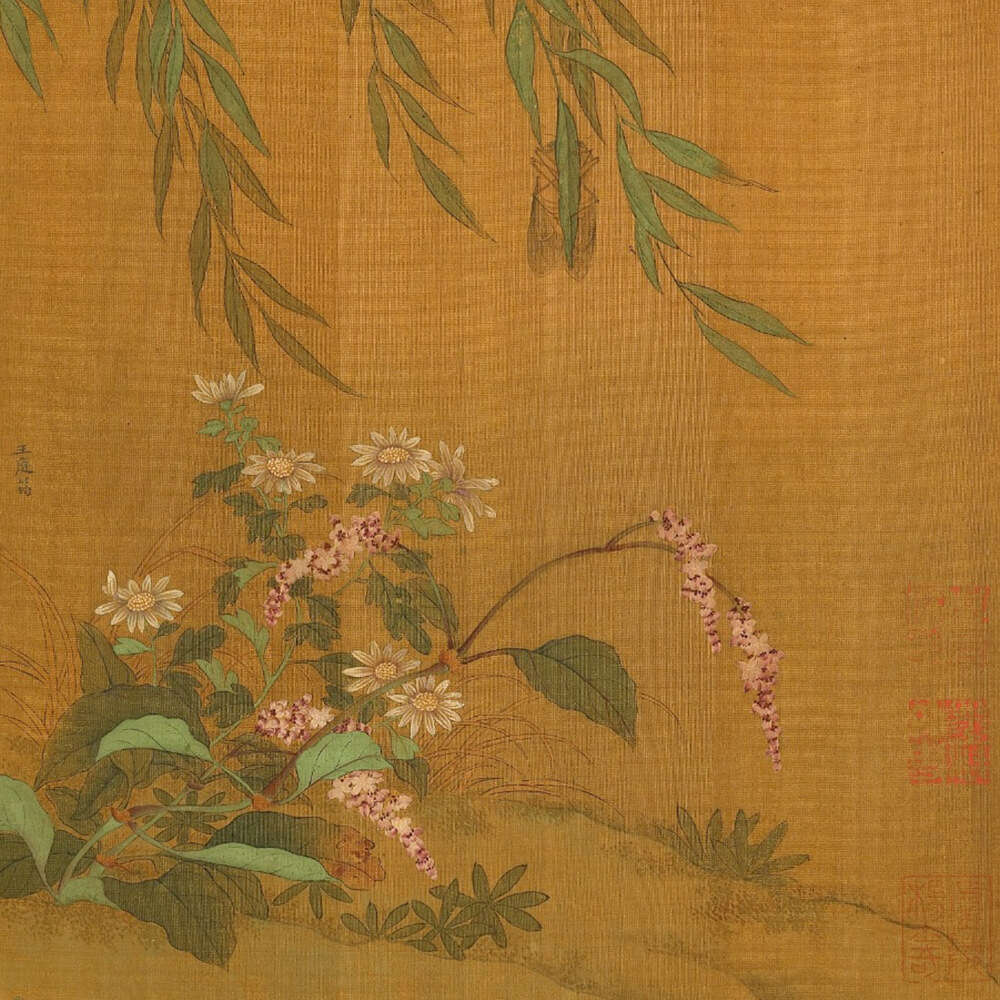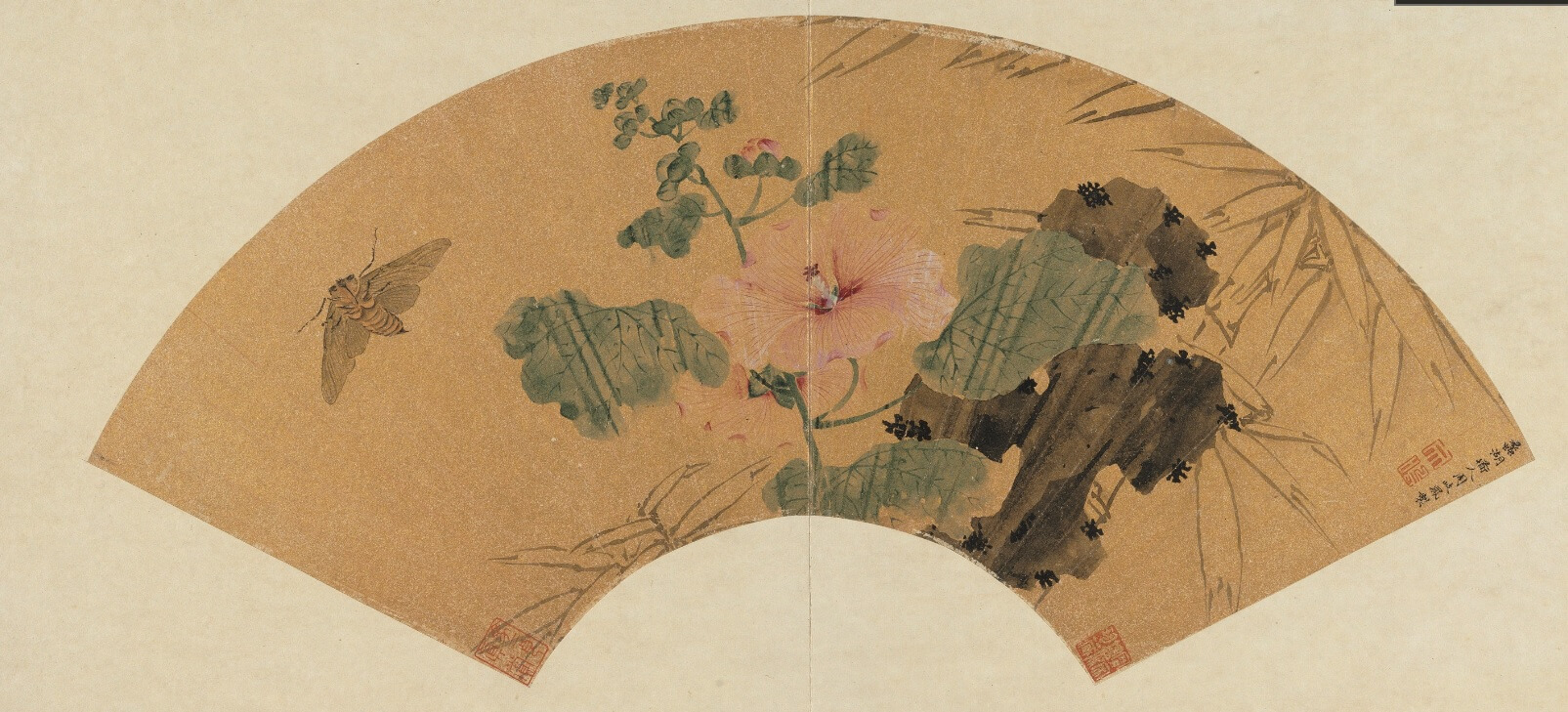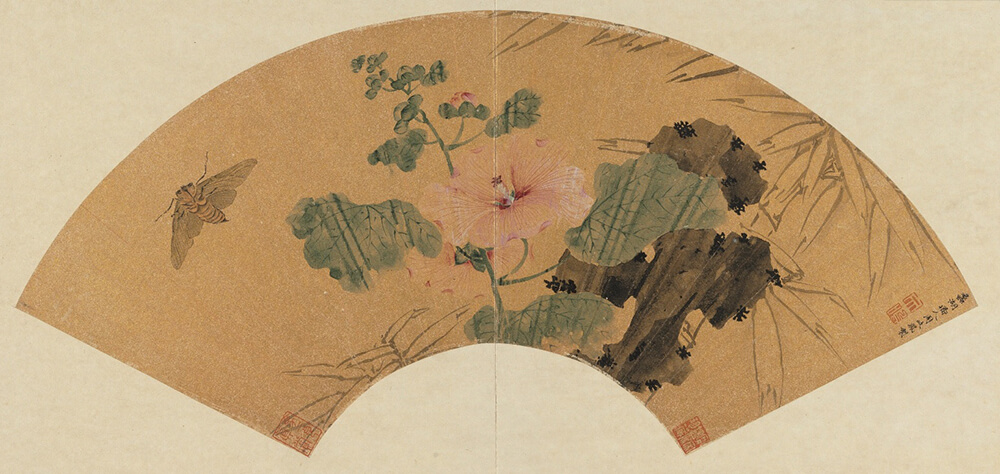The Meaning of Caochong
The abundant metaphors implied to insects have piled in literature and cultural customs due to their homonym of names or biological natures. The caochong paintings manifest the characters and beauty of these tiny creatures and plants; in a way to pay sentiment of life and to give blessings or even exhortations. How many stories related to insects do you know? Have your guesses, what implied meaning of these insects possibly were acknowledged by the ancients?
Taking biotic phenomenon as a metaphor is often more precise than vocabulary. The 'Book of Songs' had considered flies as backstabbers that gossip rumours. The 'Songs of Chu' had warned the wondering souls might get stung by giant bees or ants, not to mention the familiar phrase "when the mantis preying on a cicada, unaware of the canary is right behind".
Let us think, are there any more metaphors related to insects?
Ancient people reckoned how cicada's nymphs surface themselves through dirt and soil and later moult into the adult form as the significant symbol of nobility and rebirth, a quality favoured by literati.
Those cicadas emerging from the earth and transforming into adults during summer can only survive till autumn. The chirping of cicadas that last briefly for two to three months often brings sentiment to poets and writers about the transient life and fleeting time.
- Three Chapters on Flies
- Illustrations of the Book of Poetry from the Imperial Brush (21)
- Qing dynasty (1644-1911)
The Illustrations of the Book of Poetry from the Imperial Brush has inscriptions stating that Emperor Qianlong (1711-1799) had ordered court painters to take reference from the edition by Ma Hezhi in the Southern Song dynasty, then he personally wrote the paragraphs of the Book of Poetry in four scripts including regular, cursive, seal, and official script as the allied match.
The 'Three Chapters on the Flies' was a poem from Xiaoya that stood as a satire of believing slanderous talk. The flies are the metaphors of false calumny flying in a group in the painting, spreading chaotic disturbance that intervenes the two unwilling people.
- Three Chapters on the Mayfly
- Illustrations of the Book of Poetry from the Imperial Brush (13)
- Qing dynasty (1644-1911)
The 'Three Chapters on the Mayfly' was a poem from Caofeng that take the short-living mayfly as the sustenance in a sentiment of the beauty of brief living and the confusion when facing death. The master and servant in the painting both have their gaze on the mayflies in the air; the master ponders about the short life span of this insect and the meanings of self-existence.
- The Parenting Legend of Potter Wasps
- From Illustrations of Things in Mao's Book of Poetry (IV)
The author aimed to have proper introductions to creatures mentioned in the "Book of Songs", which explains the extraordinary illustrations. This exhibited page depicts the scene of the 'guoluo', commonly known as the potter wasps sealing a 'mingling' larva into the cavity on the bamboo fence.
Once in the past, the belief was the those young took and nursed by the wasp, eventually transfigured into the potter wasp. People had adopted this false observation and bestowed the positive aspect on the event, somehow manifests that 'upbringing' has the power to transform nature. Thus, 'mingling' also became the synonym for stepchildren.
- The Fitful Light of Fireflies
- From Illustrations of Things in Mao's Book of Poetry (IV)
- Qing dynasty (1644-1911)
The Book of Rites stated that 'rotten grass will become fireflies'. The ancients considered that the fireflies were transformed from rotten grass. In addition, their ability to glow encouraged the curiosity about this creature to thrive. This album leaf is an embodiment of a poem that a warrior in memory of his homeland, thinking about the abandoned field filled with weeds, and the rotten grass by the water bank would soon transform into fireflies. The fireflies in the painting have their bodies tinted in blue and green colours to emphasize the yellow light glowing from the bottoms
- Oh, Soul of the Deceased Return, III (West)
- Men Yingzhao (fl. 18th c.), Qing dynasty
Painted Additions to The Lament Illustrated by Xiao Yuncong Men Yingzhao (fl. 18th c.), Qing dynasty The Lament is a famous work by Qu Yuan (343-278 BCE), a poet of the ancient Chu state. One of the most famous lyrical prose poems with political tones in the history of ancient Chinese poetry, many painters over the ages have made it the object of representations with its fantastic and fascinating world. Men Yingzhao added paintings for this illustration of The Lament based on originals by Xiao Yuncong (1596-1673), "Evoking the Spirit" being one of the sections. It depicts calling out to the soul to return and not head east, where giants search for souls; it expresses in concrete terms the process by which a person becomes a spirit. The misty heavens in the painting and supernatural imagery present a fantastic and surreal visualization. Xiao Yuncong specialized in poetry, painting, and calligraphy, selling his paintings for a living after the fall of the Ming. Men Yingzhao was an illustrator-proofreader in the Four Treasuries Hall during the Qianlong reign (1735-1796) in the Qing dynasty.
- Autumn Willows and Cicadas
- Zhu Lang, Ming dynasty (1368-1644)
This painting of a mantis hunting cicada among willow leave has a unique composition of placing both subjects facing away from the viewer; it's a way of suggesting that the mantis is hunting the cicada without noticing the gaze from behind.
The painter used dark ink to express the glossy shell of the cicada and light ink to capture the willow and mantis. The spines on the sickle-shaped forelegs of the mantis are portrayed by rapid touches of the brush tip. The bending joints of cicada are achieved by calligraphy in cursive script. This piece has a rustic feel, delivering the aesthetic of zen paintings and a sense of literati.
Open Data Download
- Autumn Fragrance Beyond a Fence
- Zhang Xiong (1803-1886), Qing dynasty
The phrase "when the mantis preying on a cicada, unaware of the magpie is right behind" came from Zhuangzi's allusions; it is a metaphor that decision-making must require thorough consideration. The mind cannot only set on the profits in front of the eyes, without noticing the danger lurking in the back- just like the mantis caught by the magpie.
The black myna bites on the mantis in vibrant green, and the red of amaranth, the green of bamboo and the white of chrysanthemum enrich the visual of this image. The brilliant portrayal and fluency of brushstrokes bring the painting to life.
- Autumn Flowers
- Tan Zhiyi, Ming dynasty (1368-1644)
Tan Zhiyi (active in the latter half of the 16th century) originated from Changzhou; Tan was removed from the official post due to his disobedience against the prime minister, Zhang Juzheng, and later settled in the Jiangnan district. Tan was praised for his ability to depict flowers and birds in methods from the Song dynasty.
The chapter 'Enjoyment in Untroubled Ease' from The Book of Zhuang Zhi has the phrase, 'huigu cicada knows nothing about spring and autumn' as the metaphor for fleeting lifespan and short of knowledge. When Tan Zhiyi painted this fan, it might be his intention to express this story.
Open Data Download
- Prince's Feather and Cicada on a Willow
- Wang Tingyun (1151-1202), Jin dynasty
Willows often appear with singing cicadas; the showing belly of the cicada implies the buzz, since male cicadas generate the sounds by contracting the tymbal at their abdomens. Cicadas represent the five virtues of 'literary, honest, integrity, thrifty, trust', thus becoming the symbol favoured by literati to express their own nobility. Numerous artefacts have images of cicadas.
Although the painting has the signature of Wang Tingyun of the Jin dynasty, the different calligraphy and distinct style from Wang's extant ink art suggest this piece is a mimicry from later generations.
- Hibiscus, Cicada, and Bamboo
- Zhou Qifeng (1364-1438), Ming dynasty
Cicadas were granted the five virtues of 'literacy, innocent, probity, thrifty, faith'; hence its image became a role model that was adored by literati, hoping to convey the noble self.
This piece painted the hibiscus and peculiar stone with the 'boneless' method without a distinct outline, and the bamboo leaves used the double-hooked lining. The rare occurrence of cicada flying away from the hibiscus with belly facing outward suggests that something frightened it. The visible and long beak of the cicada shows that the painter had done careful observations.

